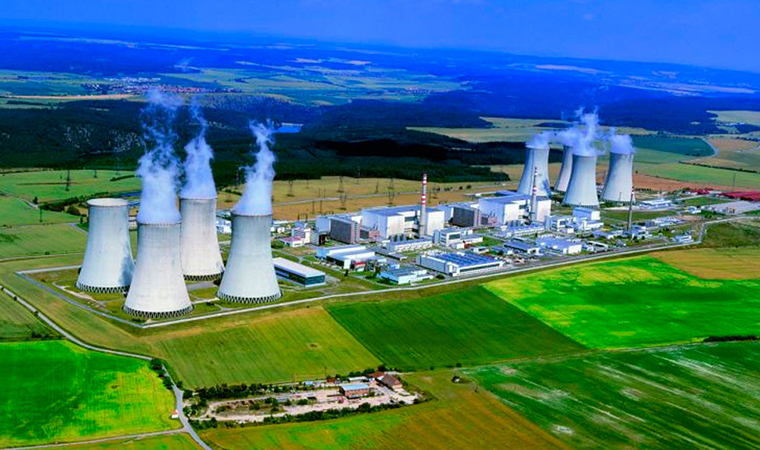
Fuel innovations
back to contentsSince 2014 the nuclear station has been using fuel rods with increased uranium content and thinned cladding designed for the reactor core to operate with a heat capacity of 1,444 MW. The new sponge-based claddings manufactured by CMP meet all the requirements for their chemical and physical properties and have passed all necessary tests. The acceptance board approved the innovative cladding technology to be used in the production of fuel rods for Dukovany from now on.
“We have done a great job. CMP has now all the facilities required to manufacture rolled products from sponge-based feedstock, from slabs to claddings,” TVEL Project Manager Alexander Ugryumov explains. He also said that there had been no single quality claim against CMP for more than 30 years of manufacturing fuel rod claddings for Dukovany NPP. This proves that CMP products are of the highest quality and that Dukovany is one of the best VVER-440 based nuclear stations as it has achieved a zero failure level for its nuclear fuel. “Quality improvements and better fuel performance are among the top priorities of the CMP quality assurance system,” says Nikolai Dulesov, a chief technology expert at CMP.
Plans are to increase the output of fuel rod claddings made of sponge-based feedstock. “TVEL relies on its experience gained at Dukovany and negotiates an opportunity to switch over to the new fuel rod type with Slovakian, Hungarian and Finnish companies,” Ugryumov says.
There are two operating nuclear stations in the Czech Republic – Temelin and Dukovany. Temelin NPP has two Soviet-designed VVER-1000 reactors with a capacity of 1,000 MWe each. Dukovany NPP was built by Soviet engineers in 1974–1987 and has four VVER-440 reactor units.
Later this year the Czech government plans to tender out the construction of a new reactor at Dukovany, Prime Minister Bohuslav Sobotka has announced recently. Westinghouse, Rosatom, Areva and engineering companies from South Korea and China are among potential bidders for the new construction contract. The construction process will not begin before 2025. The reactor unit is planned to be commissioned in 2032.




